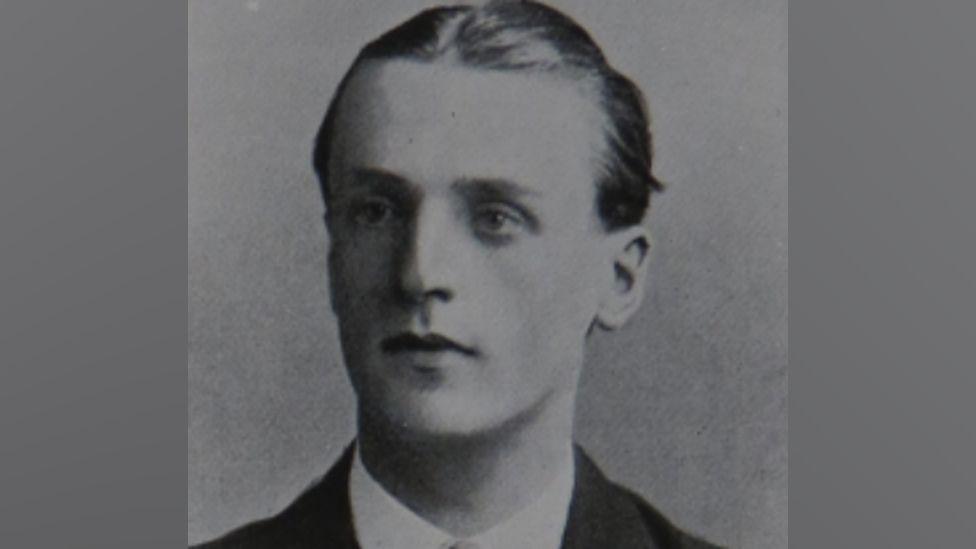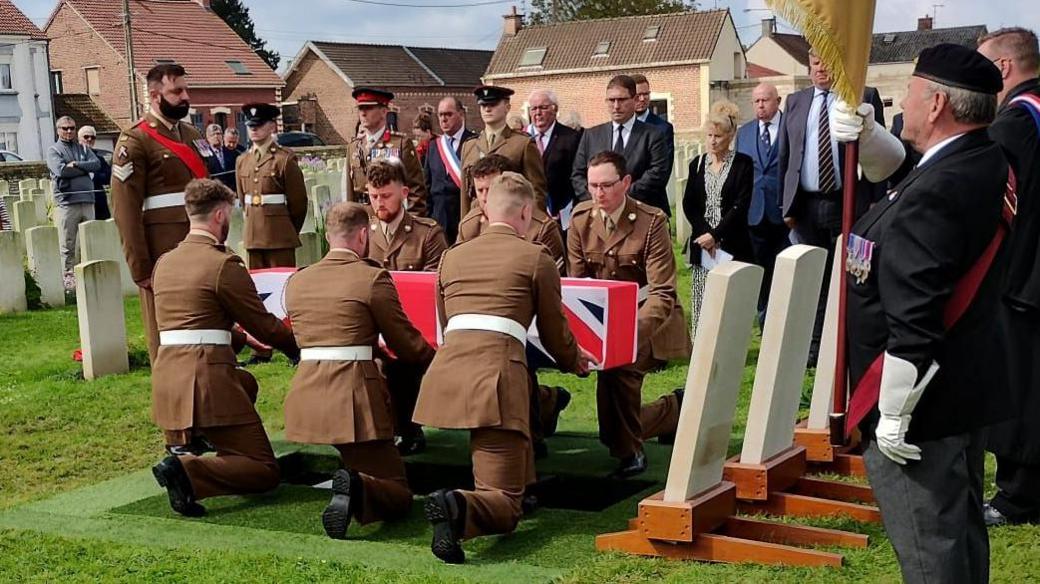Footballer killed in WW1 buried after DNA identification

2nd Lt Greenhalgh worked as a schoolteacher alongside his football career
- Published
A footballer who was killed in a World War One battle has been buried with full military honours after researchers identified his remains.
The Ministry of Defence (MoD) said 2nd Lt James Arthur Greenhalgh was shot when his trench near Violaines in France was overrun by enemy soldiers in October 1914.
A German officer later allowed a captured soldier to bury the Bolton Wanderers player's body, but the location of his grave was lost and he was listed as missing.
An MoD representative said his remains were unearthed in 2020 and later identified using DNA, allowing for a funeral to take place at the Commonwealth War Graves Commission’s Guards Cemetery near Neuve-Chapelle.
They said the 25-year-old, who worked as a teacher alongside his football career, was killed shortly after 05:30 GMT on 22 October 1914 when 1st Battalion The Cheshire Regiment were attacked.
"The alarm was raised by a patrol... but their trenches were rushed before they could resist and bayonet fighting ensued," they said.
"The entire battalion was forced to retire with six officers and 209 other ranks missing, many of whom were taken prisoner."
'Surprisingly emotional'
They said 2nd Lt Greenhalgh was "reported later to have been in the trenches and to have been shot in the head".
"His men were unable to recover him and, after the enemy had captured the village, a serjeant... was taken by a German officer to the location where 2nd Lt Greenhalgh had fallen and allowed to bury his body," they said.
After the war, "no trace of 2nd Lt Greenhalgh’s grave was found" and he was listed as missing and commemorated on the Le Touret Memorial, they said.
They added that 2nd Lt Greenhalgh's remains and those of two other soldiers were found on the outskirts of Violaines during the construction of a new housing estate.
"Although two of the soldiers had no artefacts on them which would lead to their identification, one was believed to have been an officer of The Cheshire Regiment," they said.
"After DNA testing, this casualty was identified as 2nd Lt Greenhalgh."

The coffin was carried through the cemetery by serving soldiers of 1st Battalion The Mercian Regiment
The service in France was attended by members of 2nd Lt Greenhalgh’s family.
His great-niece Joanna Potts said hearing he had "finally been found after all this time" had been "an unexpected and surprisingly emotional time".
"We are so grateful that he will now be laid to rest and commemorated for the sacrifice he gave for us all," she said.
His coffin was carried through the cemetery on Wednesday by serving soldiers of 1st Battalion The Mercian Regiment and the service was conducted by Royal Artillery chaplain Reverend Gary Birch.
Rev Birch said he had officiated at a number of burials of "both known and unknown service personnel and each one is special and important in their own right".
"Being able to honour them and finally show them the proper dignity and respect they deserve reminds us of the fragility of life and gives us an opportunity to pause, reflect and learn the lessons of past conflict," he added.
Listen to the best of BBC Radio Manchester on Sounds and follow BBC Manchester on Facebook, external, X, external, and Instagram, external. You can also send story ideas to northwest.newsonline@bbc.co.uk, external